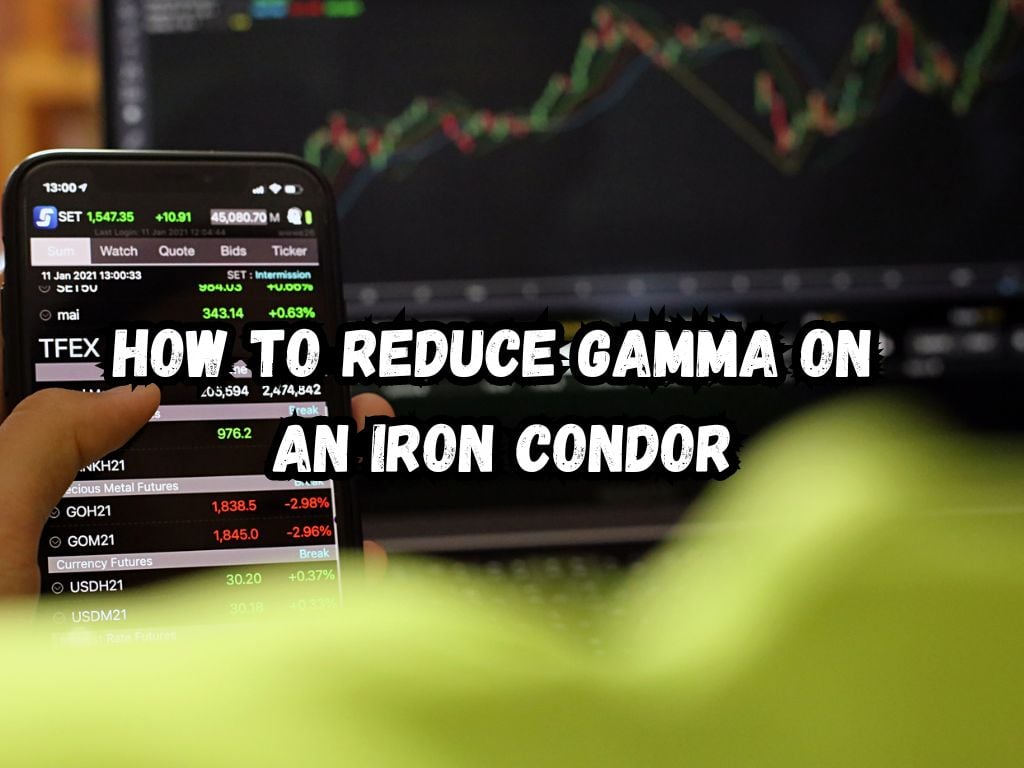In the intricate world of options trading, strategic maneuvers hold the key to maximizing profits while curtailing risk. One such strategy, the Iron Condor, attracts traders with its promise of earning through limited price movement of the underlying asset.
However, managing the ‘Gamma’—a critical Greek representing the rate of change in an option’s delta per one-point move in the underlying asset—becomes paramount to the strategy’s success.
This article explores how to reduce gamma on an iron condor, thereby enhancing its efficiency and profitability.
Understanding Gamma in Options Trading
Gamma signifies the velocity of changes in Delta, the measure of an option’s sensitivity to the underlying asset’s price movement. As expiration nears, Gamma escalates for at-the-money options, making them more sensitive to price swings.
This can substantially increase the risk for Iron Condor traders, as sudden price moves can lead to significant losses. Grasping the relationship between Gamma and other Greeks, such as Delta and Theta (time decay), is essential.
A high Gamma in an Iron Condor can quickly erode profits through rapid Delta changes, making position management increasingly challenging.

What is an Iron Condor?
An Iron Condor is a non-directional options strategy involving four different contracts—selling an out-of-the-money call and put while simultaneously buying a farther out-of-the-money call and put.
This strategy aims to profit from the underlying asset’s price staying within a specific range until the options expire.
While it can generate consistent income, the Iron Condor demands keen risk management, particularly in controlling Gamma to prevent significant losses during sharp price movements.
How to Reduce Gamma on an Iron Condor?
Adjusting Strike Prices
Selecting appropriate strike prices is the first line of defense against high Gamma. Widening the distance between the strikes reduces the position’s overall Gamma, making it less sensitive to the underlying asset’s price fluctuations.
Opting for strikes that are more out-of-the-money can also mitigate Gamma risk, as these options exhibit lower Gamma compared to at-the-money options.
Time to Expiration
Options with longer expiration periods exhibit lower Gamma. Therefore, choosing contracts with more extended expiration can help traders manage the Gamma risk in Iron Condors.
This strategy capitalizes on the slower rate of change in Delta, allowing for a more controlled risk management approach and minimizing adjustments due to market volatility.
Delta Neutral Setup
Striving for a delta-neutral Iron Condor can help manage Gamma exposure. Delta neutrality means the position’s overall delta is zero, making it theoretically unaffected by small price movements in the underlying asset.
Although maintaining a perfectly delta-neutral position at all times is challenging, adjustments to achieve near delta neutrality can significantly reduce Gamma’s impact.
Using Dynamic Rebalancing
Dynamic rebalancing involves making regular adjustments to the Iron Condor position to manage Gamma and other Greeks. This proactive strategy can entail altering strike prices or closure of parts of the position in response to market movements.
It requires vigilance and a thorough understanding of options Greeks to execute effectively but can lead to more stable returns by mitigating Gamma risk.
Incorporating Gamma Scalping
Gamma scalping is an advanced strategy whereby a trader attempts to profit from the changes in Delta. It involves adjusting the position by buying or selling the underlying asset to neutralize Delta changes, effectively turning potential losses into gains.
While it can be a potent tool in reducing Gamma exposure, gamma scalping requires significant trading experience and quick decision-making capabilities.
Choosing Underlying Assets
The choice of underlying assets can influence Gamma exposure. Stocks or indexes with lower volatility are less likely to exhibit sharp price movements, thereby reducing the Gamma risk in an Iron Condor strategy.
Opting for such underlying assets can contribute to a more stable and controlled trading experience.
Managing Risk While Reducing Gamma
Balancing risk and return is crucial in options trading. While reducing Gamma is essential, traders must also be mindful of other aspects like Delta and Theta, ensuring a holistic risk management approach.
Continual monitoring and strategic adjustments according to market conditions are imperative. Leveraging risk management tools and techniques tailored to Iron Condors can further enhance decision-making and profitability.

Pro Tips
When setting up an Iron Condor, monitoring the Greeks, especially Gamma, is vital. Utilizing software tools can provide real-time insights, enabling timely adjustments.
Additionally, being aware of common pitfalls, such as over-adjusting, which can lead to increased costs and reduced profitability, is crucial.
A disciplined approach, combined with a deep understanding of options theories and market dynamics, lays the foundation for successful Iron Condor trading.
Frequently Asked Questions
What are the signs that Gamma is too high for a safe Iron Condor setup?
High Gamma is indicated by rapid changes in Delta in response to small movements in the underlying asset’s price, signaling increased risk.
How often should adjustments be made to an Iron Condor to manage Gamma effectively?
Adjustment frequency varies based on market conditions and individual strategy. Regular monitoring is essential to determine when adjustments are necessary.
Can reducing Gamma negatively affect other aspects of the Iron Condor strategy?
Managing Gamma might impact other Greeks such as Delta and Theta, underscoring the need for a holistic approach to risk management.
Is there a perfect Gamma value for every Iron Condor setup, or does it vary?
The ideal Gamma value depends on the trader’s risk tolerance and market outlook, necessitating a customized approach.
How does market volatility affect Gamma, and what can traders do about it?
Increased market volatility can lead to higher Gamma, amplifying risk. Choosing less volatile underlying assets and making timely adjustments can help manage this risk.
Implementing the strategies discussed to reduce Gamma exposure can help traders navigate the complexities of Iron Condor trading, optimizing risk management for more predictable and profitable outcomes.
Conclusion
Reducing Gamma exposure in Iron Condor trading is pivotal to managing risks and securing consistent profits. By adjusting strike prices, opting for longer expiration periods, maintaining a delta-neutral setup, utilizing dynamic rebalancing, incorporating gamma scalping, and choosing lower-volatility underlying assets, traders can mitigate the adverse effects of high Gamma.
With practice and a comprehensive risk management strategy, mastering the art of the Iron Condor can lead to significant rewards in the complex world of options trading.


 Tags:
Tags:










